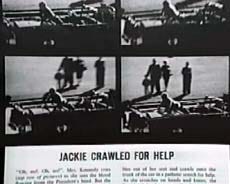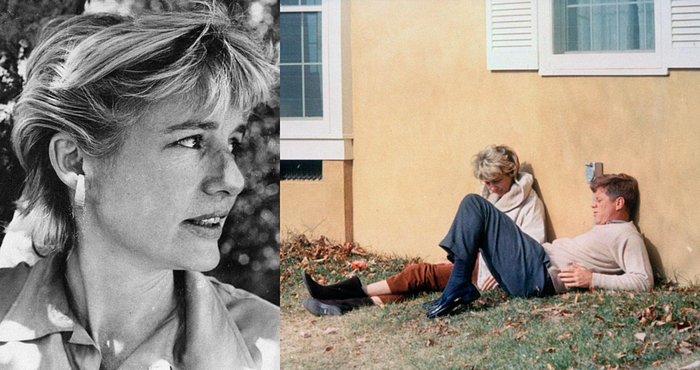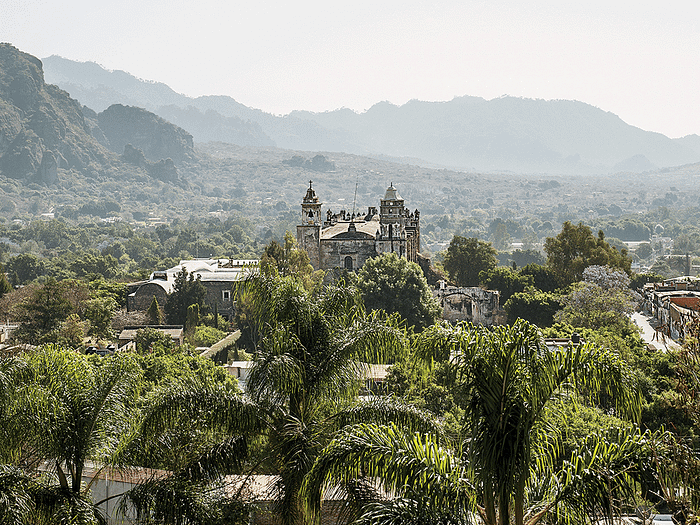My wife told me there was a new JFK doc on Prime. With two toddlers we don’t have much time to ourselves. But I’m open to anything people are doing about the assassination. After everyone went to bed I carved out 89 minutes for a viewing. And boy, am I glad I did.
JFK X: SOLVING THE CRIME OF THE CENTURY is edited and directed by Ryder Lee. It’s his only listed credit on IMDb, but he has an extensive YouTube channel and podcast, Raised By Giants. The film is produced by Jay Weidner, who also runs a YouTube channel, Reality Check. Weidner previously presented on Kubrick’s THE SHINING and the purported symbolism and meanings therein.
These days plot and other elements of a film are well-known beforehand through leaks, articles, trailers, videos. I have come to value ignoring all of that as often as possible in favor of the element of delighted surprise.
So it was with my screening of JFK X, but some patience is required through roughly the first thirty minutes as it covers familiar ground leading up to November 22, 1963. A large portion is dedicated to the Kennedy Brothers’ battle with organized crime. The filmmakers are here foreshadowing what is to come. They do this through carefully chosen language from the narrator, teaser lines from Weidner — the film’s sole talking head — and certain images chosen from the Zapruder film.
And it is the Zapruder film that is the key evidence in JFK X’s argument. By now a household name, the Zapruder film, of course, refers to the 27-second 8mm home movie of the assassination shot by dressmaker Abraham Zapruder from the north pergola in Dealey Plaza. It always struck me how remarkably cool Zapruder reacted to what was unfolding before him. His camera pan barely shakes when the president is gunned down, and for an amateur Zapruder operates the camera like a war photographer as he continues filming while Jackie climbs on the trunk, Clint Hill rushes onto the car, and the limo finally disappears out of the frame.
I always wondered: if Zapruder was able to maintain such composure during the ambush of the president, why didn’t he keep filming the rest of the motorcade? Is it not conceivable the purported sniper would have kept shooting at the motorcade, possibly severing the chain of government — LBJ, Senator Yarborough, and others? It is not out of the realm of possibility the shooter could have been a precursor to Charles Whitman, the sniper in the University of Texas tower who picked off fifteen people and injured 31 in 1966? The worst thing you can say about Zapruder’s filming abilities is when he lets the limo drift almost entirely out of frame right at the fatal frame 313. To Jay Weidner, however, that is not Zapruder’s fault but a telling optical manipulation done by technicians after the fact for a very specific reason.
For Weidner makes the case that a hoax is on display in the Zapruder film. JFK X cites the 2003 book The Great Zapruder Film Hoax, edited by James Fetzer, which argues that the Zapruder we now have was heavily retouched and edited. However, Weidner suggests the book’s authors were misled: the Zapruder film wasn’t a hoax, but the events in Dealey Plaza were.
This is where the film kicks into high gear as it presents its central premise, outlandish it may be. And yet, somehow, I kept watching…enthralled and stupefied.
Weidner makes the case that there were no gunshots fired in Dealey Plaza. He points out the lack of reaction from the crowd when such gunshots were apparently going off. He points out that what we see happen to JFK does not reflect what the Parkland hospital doctors saw. We see no blood from the gunshot wound to the neck. Weidner points out two splices, including a splice with missing frames when the freeway sign blocks Zapruder’s angle of the limo. Weidner claims the explosion at frame 313, the all-important head shot, was not the result of a bullet, but a squib — as in the special effect squib any student of action movies would recognize.
In other words, JFK X: SOLVING THE CRIME OF THE CENTURY claims there was no assassination at all in Dealey Plaza, but that the 35th president of the United States faked his own death and lived out his days on Aristotle Onassis’s Ionian Sea island, Skorpios. What Jackie Kennedy retrieved on the back of the limo, according to Weidner, was the squib.

This is not exactly an original conspiracy theory, but the notion of the squib, as far as I could ascertain, certainly is unique.
Weidner goes on, his theory incorporating murdered Dallas police officer J.D. Tippit as a replacement corpse for JFK, that Oswald was given a black sweater to hide the lack of blood from his own staged murder at the hands of Jack Ruby (and is that a white-collared shirt Oswald has on?).
Why would the president do this? And who was the creative mastermind who helped direct the action, who showed JFK how to set the squib and how Jackie was to react? The film argues Kennedy knew that “like Caesar he was surrounded by enemies,” so he decided to beat them at their own game. The film also argues Kennedy was deeply influenced by Lincoln’s stature in American lore as being revered for enduring assassination than by a potentially weakened legacy dealing with Reconstruction in a second term. Could the eerie similarities between the Lincoln and Kennedy assassinations be, then, a mere in-joke for those who knew the whole thing was a scam?
If it was a scam, who scripted and directed it? Might have the assignment fallen to a young filmmaker named John Frankenheimer, who in November 1963 was three-and-a-half months from the premiere of his new film, SEVEN DAYS IN MAY, an adaptation of a 1962 novel about a military conspiracy to topple the government and a book JFK himself wanted to see produced as a film? The Frankenheimer notion itself has come up before, namely by Tyler McCloskey in the essay “JFKTV: The Kennedy Assassination as Television Programming.”
***
Weidner believes that a counteroffensive was launched in the wake of JFK X’s July 2023 release on Amazon Prime and other platforms. Among such counteroffensive, per Weidner, was the emergence of Paul Landis, the ex-Secret Service agent who broke his 60-year silence to tell his story and his role with the magic bullet in The Final Witness. For Weidner, the cottage industry of conspiracy theories is just as wrong as the Warren Commission.
I suppose, then, my own book on the assassination, The Mad Bishops, falls into the counteroffensive category as well, as it was published in November 2023 by TrineDay. And my subsequent documentary short, DAVID FERRIE, which includes reflections from civil rights expert Jim Robenalt, who helped Landis navigate the intense media exposure, might also be considered part of the counteroffensive.
However, I only learned about JFK X: SOLVING THE CRIME OF THE CENTURY a few days ago. And I enjoyed the film. I’ve encouraged anyone who would listen to see it. I appreciate earnest, fringe, low-budget efforts as alternatives to the over-budgeted franchise products we’re force fed — and I suspect I’m not the only one.
Which brings me to the final piece of Weidner’s theory: Mary Pinchot Meyer.
According to Peter Janney’s 2016 book Mary’s Mosaic, Mary Pinchot Meyer was involved in a serious affair with President Kennedy. Two days shy of her 44th birthday, on the cool morning of October 12, 1964, Pinchot was walking along the Chesapeake and Ohio towpath — a path Meyer often walked with Jackie Kennedy — when she was shot twice, once in the back, and once in the head.
According to Weidner, this was also a staged murder so that John and Mary could be united in an Onassis-protected oasis — Skorpios.

Here I will take leave of the world of JFK X and propose further investigation into another oasis: Cuernavaca, Mexico, particularly the elite enclave Rancho Tetela. The sheer number of elite and successful Texan businessmen and socialite women shuttling back and forth, namely to Dallas, namely from Cuernavaca, has gone totally unexplored. Sam Giancana found refuge in Rancho Tetela and warded off FBI attempts to extradite him to the U.S. Rancho Tetela itself was originally private property of wealthy Texan Col. Harry E. Stewart, whose ex-wife oversaw the community during Giancana’s residency.
Cuernavaca also functioned as a refuge for anything from the psychedelic community, characterized by Timothy Leary’s experimentation with psilocybin mushrooms, to the “de-Yankeeification” mission school of controversial ex-Catholic priest Ivan Illich, the Center of Intercultural Formation. Ostensibly, Leary counted among his friends Mary Pinchot Meyer.

A Harvard lecturer in psychology, Leary recounted in his 1983 autobiography Flashbacks how he first met Mary Pinchot Meyer in spring 1962: “I’m Mary Pinchot. I’ve come from Washington to discuss something very important. I want to learn how to run an LSD session.” Leary goes on to detail the alleged conversation that followed that evening after Pinchot helped make dinner for Leary’s kids; the adults then took “a low dose of mushrooms” and chatted around the fire.
“You don’t really understand what’s happening in Washington with drugs, do you?”
“We’ve heard some rumors about the military,” I [Leary] said.
“It’s time you learned more. The guys who run things — I mean the guys who really run things in Washington — are very interested in psychology, and drugs in particular. These people play hardball, Timothy. They want to use drugs for warfare, for espionage, for brainwashing, for control.”
“Yes,” I said. “We’ve heard about that.”
“But there are people like me who want to use drugs for peace, not war, to make people’s lives better. Will you help us?”
“How?”
“I told you. Teach us how to run sessions, use drugs to do good.”
Mary Pinchot Meyer’s murderer was never found. Meyer was an abstract painter. At the time of her death, her paintings were on tour in Latin America sponsored by the Pan-American Union.
Meanwhile, Meyer’s former husband was a CIA man deeply entrenched in Latin American covert operations affairs. Together with Costa Rican president Jose Figueres Ferrer, Cord Meyer, Jr. created the Inter-American Democratic Social Movement, INADESMO, conceived as a left-wing political movement in order to influence the anti-Communist left in Latin America. He was also a pivotal player in the CIA’s media operation, Mockingbird. Curiously, readers of my previous articles will recall numerous references to the Civil Air Patrol (CAP) as popping up at key points in the JFK case. It is no different with Cord Meyer, Jr.: his father, Cord Meyer Sr., served with D.H. Byrd on the CAP executive board, and founded the CAP NY branch. Byrd, of course, was the owner of the Texas School Book Depository, which employed former CAP cadet Lee Oswald. The alleged assailant of Dallas officer J.D. Tippit reportedly fled into the Abundant Life Temple church building, then operated by a former CAP chaplain. Then there is the possibility of a former CAP man present when Oswald entered the Texas Theatre.
Lee Oswald, or someone impersonating him, actually was in Cuernavaca during the mysterious Mexico trip in September 1963. Once in Mexico, the Lee Oswald figure met Honduran Luis Fernandez Gonzalez, a member of the Movimento de Liberacion Nacional (the National Liberation Movement) in front of the Hotel Reforma on September 28. Oswald introduced himself to Gonzalez as “John White.” The next day, Fernandez joined “John White” and Saul Lopez, press chief of the National Liberation Movement in Mexico, on a trip to Cuernavaca, spending the day at the Casino de la Selva, a resort from a bygone era that used to entertain the likes of Al Capone and Bugsy Siegel before the hotel casino was shut down. It remained open as a nightclub, where Sam Giancana frequented while a Rancho Tetela resident (under the alias Sam De Palma).
When the Lee Oswald figure purchased a tourist card for entry into Mexico on September 17, 1963, the previous tourist card issued the same day was to William Gaudet, a source for the Central Intelligence Domestic Contact Division, and one who had seen Oswald together with Guy Banister and David Ferrie in New Orleans. On the surface this suggests that Oswald and Gaudet obtained their tourist cards together. However, there is another dimension: Gaudet’s association with Nelson Rockefeller’s Inter-American Affairs. Gaudet claimed his publications, the Latin American Newsletter and the Latin America Report, were of great value to Inter-American Affairs. Gaudet told researcher Bud Fensterwald in 1975, as quoted in Jeffrey Caufield’s General Walker and the Murder of President Kennedy, that he “was a secret agent for Nelson Rockefeller in Latin America during World War II and switched to the CIA in 1947, working for them until 1969.”
Gaudet was also suspected of being an informant for Stephen B. Lemann — legal counsel for WDSU in New Orleans. I have already written about WDSU in relation to the assassination media campaign to sully Lee Oswald. Furthermore, William Gaudet knew Jack Ruby, when Ruby bought artwork in New Orleans for Algur H. Meadows in 1959, per H.P. Albarelli’s Coup in Dallas.
Along with Gaudet, George de Mohrenschildt also reportedly worked for Rockefeller’s Inter-American affairs.
Cuernavaca, Inter-American Affairs, and the Good Neighbor Commission is an intriguing triangle of espionage with Dealey Plaza on November 22, 1963 in the middle. The Good Neighbor Commission of Texas was established by Governor Coke Stevenson in 1943 with its principal aim to tackle discrimination and improve labor relations for Mexicans living and working in Texas. Its origins come, once again, from Nelson Rockefeller’s Inter-American Affairs. The “who’s who” of Texas elite were tapped to lend their resources to the Commission’s efforts:
- Oil magnate Neville Penrose, future chairman of the Good Neighbor commission and father-in-law of CBS correspondent Bob Schieffer. Also owned property in Cuernavaca;
- H.H. (Pete) Coffield, wealthy oil magnate with ties to Lyndon Johnson and deeply involved in the Texas prison system;
- Lloyd Bentsen, Sr., then a senior colonel in the Texas State Guard Reserve Corps, and father of future senator Lloyd Bentsen, Jr.;
- D.H. Byrd;
- Clint W. Murchison, whose oil interests stretched from Franco’s Spain to Haiti and whose wealth extended to owning a private island off the Gulf of Mexico in Veracruz. He also employed George de Mohrenschildt at Three States Oil and Gas company.
In sum, the Good Neighbor Commission, with the blessing of the governor and the help of the Office of Inter-American Affairs, operated as a de facto government-within-a-government: there were those duly elected to serve the people, and there were those who really ran things behind the scenes.
***
While JFK X should be applauded for including the actual tape of Klansman Joseph Milteer conversing two weeks before the assassination with FBI/Miami police informant Willie Somersett that plans were in the works to shoot Kennedy from an office building with a high-powered rifle, and that a patsy would be picked up shortly after the school year, unfortunately nothing else is said about Milteer, who was in Dallas on November 22, and is a vital figure to understanding the radical right’s loathing of the president and desire to see him gone.
So what are we to make of all this?
On the one hand it’s easy to dismiss JFK X: SOLVING THE CRIME OF THE CENTURY as outlandish fantasy. On the other hand it’s been over sixty years and the case remains convoluted, complex, and, frankly, a cliche in pop culture. In this way, what Weindel and Lee are presenting, standing on the shoulders of McCloskey, James Shelby Downard, David Icke and others, is that perhaps the unbelievable concept of a Kennedy faking his death is not so unbelievable after all. What else, really, is there? Could this actually be what has been sealed away all these decades? Why it remains a matter of national security? Why a 75-year ban was initially put on Warren Commission documents and deliberations? Why Jackie Kennedy’s pink suit is not to be displayed publicly until 2103?
Referring to withholding some of the JFK files during his time in office, then-President Trump told Andrew Napolitano in January 2021, “Judge, if they showed you what they showed me, you wouldn’t have released it either.”
